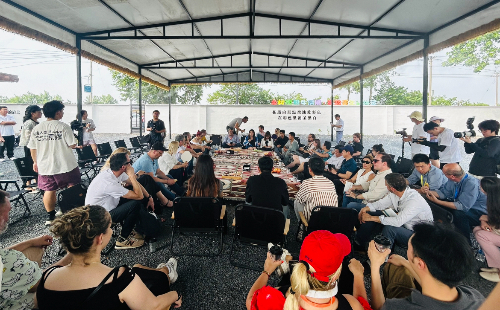Nation urged to boost inbound tourism market
Experts, industry insiders call for more measures to facilitate travelers
Tourism experts and industry insiders have called for streamlining visa issuance procedures and improving services in transportation, payment and accommodations for international travelers, in a move to accelerate the recovery of the inbound tourism market and boost industry operators' confidence.
In the first half of this year, the country's entry and exit authorities recorded a total of 168 million arrivals and departures from the Chinese mainland, which is around 49 percent of the figure in the same period in 2019, according to the National Immigration Administration.
Of these arrivals and departures, about 74.9 million were made by residents from the Hong Kong and Macao special administrative regions and Taiwan, while nearly 8.44 million were made by foreign travelers.
Flagging performance
The inbound tourism market showed a flagging performance in the nation's metropolises such as Beijing and Shanghai, which used to be the main attractions for international visitors.
According to the Shanghai Bureau of Statistics, the city received about 1.24 million visits by overseas travelers in the first half of the year. Of these, 756,200 were made by foreign travelers, which was about 22 percent of the figure in the same period of 2019.
Dai Bin, president of the China Tourism Academy, said that although there has been a decline in inbound tourism, China has confidence in and is resolutely determined to develop its inbound tourism market.
Hu Jiying, deputy general manager of CYTS International Travel Co, said the company resumed services for international travelers from countries and regions such as the United States and Germany in late March.
"Most of them were on business trips and conferences, while a few were for sightseeing," Hu said. "So far, our inbound tourism business is 5 to 10 percent of the pre-COVID level."
She said that sales of China's inbound tourism products mostly depend on overseas tourism agencies, which usually advertise the tour products around a year before the departure date.
"As China implemented very strict entry policies to control COVID-19 in 2022, most overseas agencies did not budget for the promotion of tourism to the Chinese mainland that year, when they planned their promotion campaigns for 2023. We may see a full recovery of inbound tourism after 2024," she said.
Time-consuming visa application procedures and expensive international flight tickets have also hampered the recovery of international travel to the mainland, Hu said.
To reinvigorate the market, China took measures to ease its entry policies for overseas travelers earlier this year.
Tour groups from Hong Kong and Macao, the two main sources of inbound travel to the mainland, resumed on Feb 6, while visits by international tour groups restarted on March 31.
Entry policies were further relaxed in recent months, with China resuming its 15-day visa-free policy for travelers from Singapore and Brunei on July 26.
The visa-free policy for these two countries, which was introduced in June 2003, was suspended in March 2020 due to concerns over COVID-19.
In addition, on May 19, group tours of the mainland were resumed for residents of Taiwan.
However, Zhang Yang, an associate researcher at the China Tourism Academy, said the tourism market continues to face problems in the post-pandemic era.
She said that these include "the restoration of the products and services supply chain, a shortage of creative tour products and inconvenience in terms of payment, transportation and accommodations services for international travelers".
Hu, the deputy general manager of CYTS, said that "inbound tourism plays a key role in stabilizing foreign investment and foreign trade, which can also help promote international cooperation and communication".
In order to further promote the development of inbound tourism, she said that it is necessary to stress the importance of market discipline, international promotion channels and travel agencies that are qualified to operate inbound travel services.
She suggested that China should conduct more tourism promotion activities in overseas markets, as well as streamline visa application procedures.
"Chinese companies should get more actively involved in overseas tourism fairs to promote the nation's beautiful travel routes and destinations on the global stage. The government could invite some international tourism agencies to visit in order to encourage them to include more Chinese tour products in their advertising campaigns," Hu said.
"We also hope that more international flights can be resumed and more tour guides will be trained to speak foreign languages in the future," she said.
Steps to assist
In fact, China has taken a number of steps to assist international travelers in the past few months.
For example, WeChat Pay and Alipay announced last month that their online payment services would be made available to international users.
As a result, international travelers can make mobile transactions for shopping, transportation and sightseeing after linking their bank cards to the two apps.
Dai, president of the China Tourism Academy, called for drafting a State-level plan to revitalize inbound tourism, in which improving foreign visitors' travel experiences should be prioritized.
"Local authorities should deepen cooperation to promote the image of their area and improve its reputation."
He said that it's also important to improve tour products by better taking into account international travelers' cultural background and dietary preferences.





 play
play